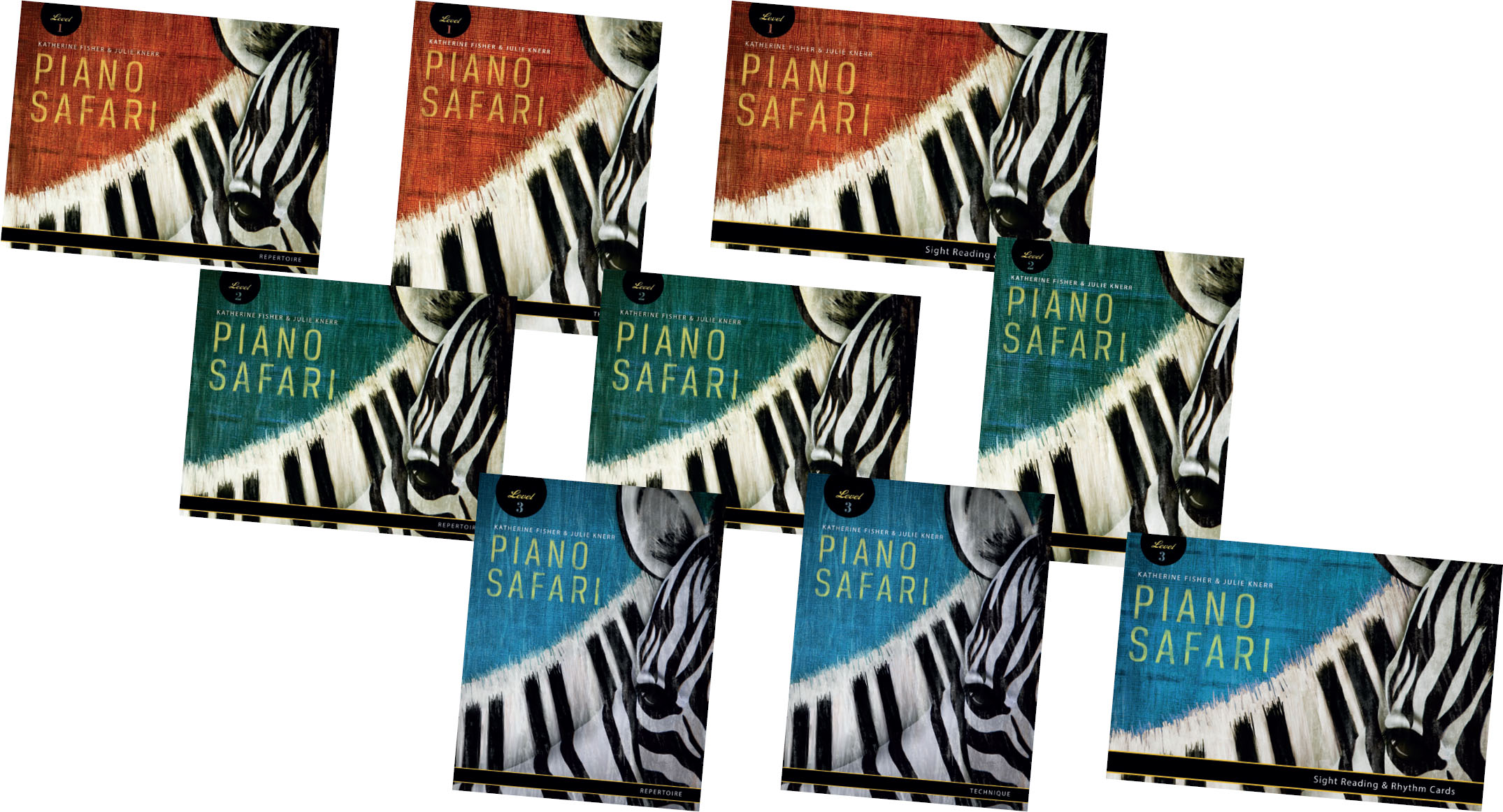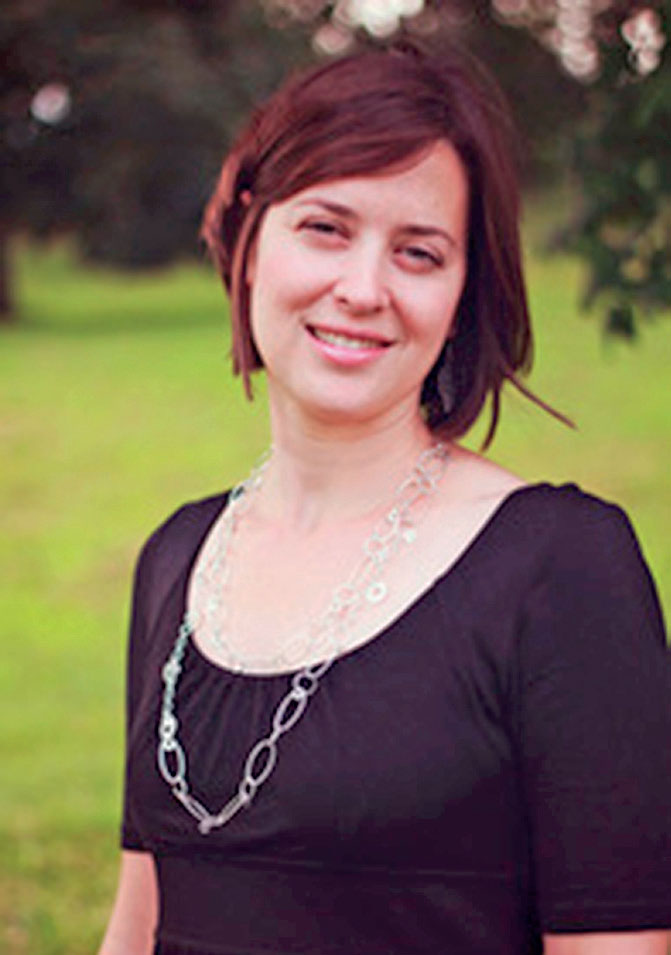

What are the basic tenets of the Piano Safari approach, and why are they successful?
Katherine Fisher: One of the first questions we receive when we meet new teachers is ‘Why is your method different than others currently available?’ One of the defining characteristics of the Piano Safari pedagogical approach is that pieces are taught in a variety of ways, rather than solely from notation. Reading Pieces are taught from notation, but we also include pieces that are taught by modelling the teacher and by listening. We call these ‘Rote’ or ‘Pattern’ pieces. Rote Pieces are more difficult than the student can currently read, so they provide more sophisticated harmony and rhythm than the simpler ‘Reading’ pieces. Music learned by rote benefits students’ overall development as musicians by enabling them to focus solely on the technical and musical aspects of the piece. Rote Pieces also sound more advanced than the typical beginning Reading Piece, which provides motivation and confidence for beginning pianists. As the Piano Safari method progresses, the student's reading level gradually increases to match the level of their Rote Pieces. By Piano Safari Level 3, the student's reading ability has increased to the point where Rote Pieces are no longer needed. To summarise, Reading Pieces develop visual literacy, while Rote Pieces promote aural and technical literacy. These skills combine to form students who are well-rounded musicians.
How does Piano Safari represent, as you call it, a ‘holistic approach’ to piano teaching?
Julie Knerr: When we first created Piano Safari, we knew we wanted to use an intervallic approach to reading. Including Rote Pieces, we thought, would make the method more interesting, as an intervallic method can be a bit pedantic. What we found was that rote teaching had benefits far beyond making the method interesting to students. What we stumbled upon was a holistic approach to learning music, where students become musically literate with both their eyes, through learning to read notation – visual music literacy – and their ears, through learning pieces by rote: aural music literacy. Both are important in the creation of a musically literate student. In addition, the Rote Pieces, which are carefully composed based on keyboard patterns that are easily grasped by beginning students, show students that music is not a random collection of notes, but is composed in logical patterns. Students understand these patterns in their rote pieces, and they are constantly finding patterns in their reading pieces and sight-reading cards as well. The students then take this further by using these patterns to create their own music. We did not anticipate this, and we were very surprised at their explosion of improvisation and composition. We began to see that Piano Safari surpassed what we had envisioned for students by combining reading, rote, technical proficiency, and improvisation. We believe that concepts should be carefully sequenced but also taught in a variety of ways. The students learn each technical, musical, and notational concept by playing, hearing, and improvising. Then they learn the concept by seeing the notation, and finally, by writing it. Learning a concept through these different modalities provides a deep learning experience.

Katherine Fisher
Julie Knerr
How do the Piano Safari levels fit with the graded system that we are familiar with in the UK?
KF: The focus in Piano Safari Level 1 is the development of a strong foundation in technique, rhythm, reading, and improvisation. Although it is possible to enter students into British preparatory levels by the end of Repertoire Book 1, we find many teachers choose to wait until their students are firmly grounded in Piano Safari Level 2 or 3 before starting the graded system. It is important to take time to lay the groundwork of overall musicianship before moving students into an exam system. Generally speaking however, students in Repertoire Book 2 are able to enter preparatory levels, and students in Repertoire Book 3 are able to enter Grade 1 or 2.
What are your plans for the future of the series?
KF: As mentioned earlier, the focus in Piano Safari is to lay a strong foundation of musicianship for the beginning student. We do not currently plan to publish method books beyond Level 3, because we believe this is the point at which the student has a firm enough grounding in technique, reading, theory, and artistry to move in any direction they choose. That said, we do publish supplemental collections of intermediate works for students who are beyond Piano Safari Level 3. We also plan to write a version of Piano Safari for the older beginner. This will be our next major project!
What aspects of the approach which could be applied to other instrument groups, or to general musicality?
JK: Non-piano teachers can consider how the various modalities of learning can be applied to learning any instrument. Most method series focus strictly on reading notation. However, this is only one aspect of a student's musical literacy. The composers and performers of the past were adept at reading music, but they also deeply understood musical patterns and structure, and they were readily able to use these patterns to create their own music. We should expect no less from today's musicians. Deep musical learning comes from listening, understanding, manipulating, relating patterns to other pieces, and creating, not just from learning to read notation. This is a musical approach to learning that applies to any instrument.
Julie, the abstract to your PhD dissertation concludes with the hope that your work will improve the level of piano teaching ‘in the United States’, but in fact Piano Safari has seen success far beyond the US. What have you learnt since your dissertation about approaches to piano teaching internationally?
JK: I have learned that so many teachers are open to new ideas, and that there is a hunger among both new and seasoned teachers to improve in their craft of teaching. We have been humbled and awed by the enthusiastic reception of the ideas in Piano Safari both in the United States and around the world, and we look forward to continuing to learn from our students and to produce new materials that will create the most interesting and pedagogically sound approach to teaching piano.




